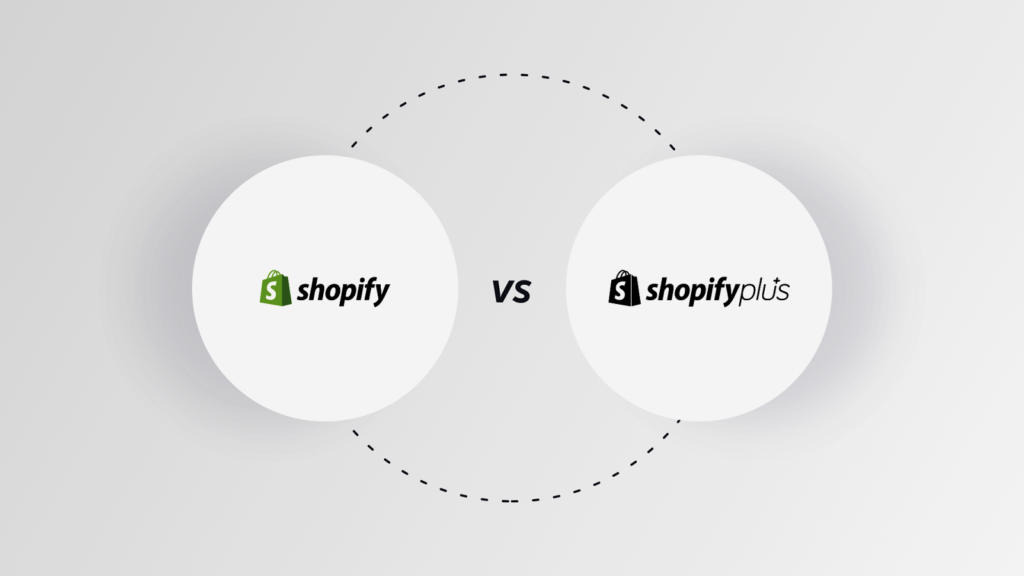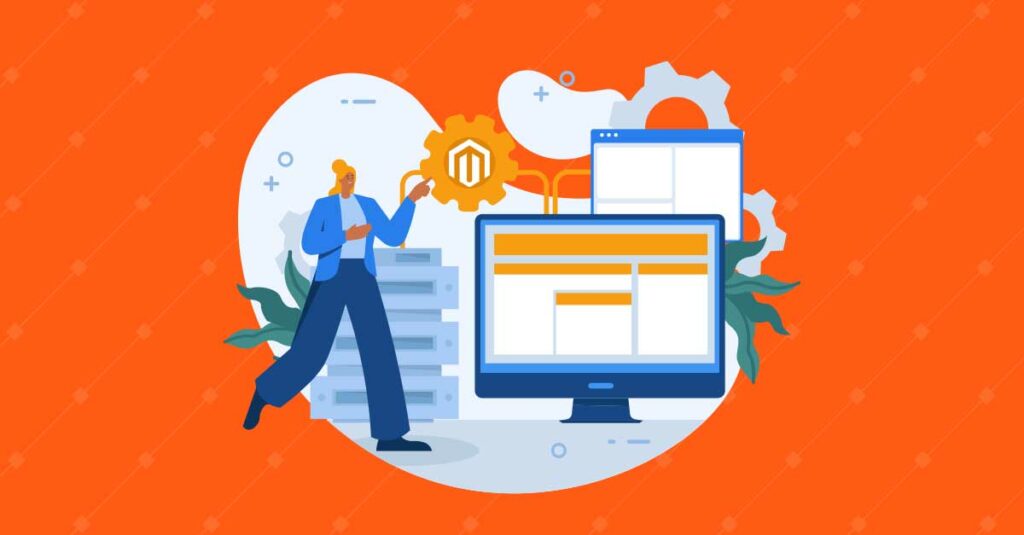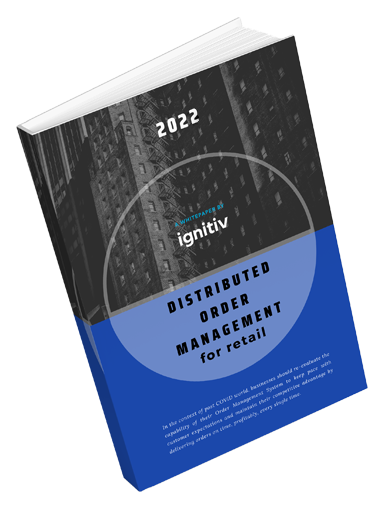B2B eCommerce Strategies
Organizations across the globe are in the race to be known for the customer experience they provide. Reports show that brands that focus on customer experience bring in 5.7 times more revenues than those organizations that lag on this front. 84% of organizations who focus on customer experience reported an increase in revenue. 73% of consumers rate customer experience as the key influencer of their brand loyalty. Clearly, there is no lack of data on the importance of CX.
However, CX is not confined to physical interactions but is a sum of all experiences with a brand/organization, both physical and virtual.
B2B companies have had to jump on the eCommerce bandwagon as the pandemic forced customers indoors and interactions online. However, given that 73% of B2B buyers are millennials who are used to elevated online interactions and are well-versed with this technology-driven world, B2B eCommerce experiences are being forced to confront the fact that they cannot fall short of the experience offered by their B2C counterparts.
Learn How Ignitiv Can Help
Here is a look at some B2C eCommerce strategies B2B companies can (and must) adopt to drive business and profitability.
The User Experience
A Netflix or Amazon-like experience is no longer the icing on the eCommerce cake. It is an essential ingredient. Technology expansion has elevated customer expectations, and B2B buyers now want their B2B buying experiences to mimic their B2C interactions. As such, B2B eCommerce strategies have to pay close attention to the UX that the platform offers. Much like B2C eCommerce platforms, B2B eCommerce platforms have to provide more than a strictly utilitarian drop-down list of SKUs. Engaging product content, characters, navigation, and the ease of order fulfillment are some of the key areas where B2B eCommerce should follow B2C eCommerce. Given the complexity of B2B products, UX becomes even more important for B2B eCommerce. The UX has to provide deep, rich, and immersive experiences and help their customers complete their buying transactions in the least number of steps. Smart web merchandising and compelling product information presentation also become valuable contributors to outcome-focused UX.
Personalization has to be a priority
Personalization has a direct impact on customer experience. The smarter and more relevant the level of personalization, the more positive the influence on customer experience. While B2C personalization is targeted at impulse buying, the objective of B2B personalization is to identify potential cross-sell or upselling opportunities as B2B buying rarely happens on impulse.
B2B eCommerce personalization thus has to rely heavily on customer analytics to identify preferences and offer the right product suggestions to make buying journeys easier, offer personalized pricing, enable correct product bundling, and also provide personalized product catalogs.
Personalization also can influence the ordering process and make it simpler by eliminating complexities and customize the ordering process according to the buyer type. With access to deep customer analytics, B2B eCommerce platforms can improve and fine-tune their personalization capabilities by gaining robust insights into customer preferences and buying behaviors. They can then capably curate the right customer journeys that result in higher conversion rates.
Drive performance and reliability
Performance and reliability are essential drivers of elevated eCommerce experiences. For B2B eCommerce this means making the right technology choices to drive performance without compromising on information or data security. Performance and reliability contribute directly to customer experience – high performance results in greater customer satisfaction and contributes positively to the customer experience.
Given product and information complexity, B2B eCommerce sites have to ensure that the loading and search speed are optimized. Even a minute delay can lead to a drop in conversions. Additionally, the site has to be scalable to accommodate heavy load during high-traffic seasons to ensure the site performance remains unaffected during these times.
Deliver an optimized omnichannel buying experience
B2B buying is a complex process. However, the online check out process must be anything but. Modern-day buyers have no patience for long, cumbersome, or confusing check out processes. Providing a seamless, simple, and short checkout process, offering standard features in the cart and during checkout, an early and clear indication of shipping and other charges, clear display, and providing a summary of cart content are important areas that drive an optimized buying experience.
Being mobile-first is now a must and ensuring that all online experiences are ably delivered in a uniform and device-agnostic manner is imperative for success. Also, given that B2B buying is more complex, the eCommerce platforms must enable strategies such as BOPIS (Buy Online, Pick up in Store) and SFS (Ship / fulfill from store).
Product content and searchability
Product information management is another aspect where B2B eCommerce has to mimic and surpass B2CeCommerce strategies. Compelling and complete product information, connecting the right SKU’s with the right data assets, 360-degree view of products, and product videos, etc. all optimize the product content. The right information available to the buyer at the right time helps move the buying journey forward and elevates the customer experience.
Proper product content management also enhances searchability – a feature critical for B2B eCommerce sites. Consistent product tagging and advanced navigation that allows consumers to filter products on several specifications such as price, color, brand, model, etc. influence the search functionality. An optimized and successful site search experience has to make the buyer’s journey easier by making sure they quickly and easily discover just what they are looking for. This becomes critical for conversions.
While this is a smart checklist for B2B eCommerce sites, these sites have to inherently work towards making the buyer’s job easier. These sites have to accommodate multiple things that make workflows faster and simpler. As such, understanding the buyer’s intent and needs, accommodating their different buying paths and workflows, and offering personalization, and custom catalogs become key focus areas. Thus, while B2B eCommerce platforms can borrow some design considerations from their B2C counterparts, ultimately, they need to design their unique paths to accommodate the specific needs of their B2B buyers.
b2b ecommerce strategies
Organizations across the globe are in the race to be known for the customer experience they provide. Reports show that brands that focus on customer experience bring in 5.7 times more revenues than those organizations that lag on this front. 84% of organizations who focus on customer experience reported an increase in revenue. 73% of consumers rate customer experience as the key influencer of their brand loyalty. Clearly, there is no lack of data on the importance of CX.
However, CX is not confined to physical interactions but is a sum of all experiences with a brand/organization, both physical and virtual.
B2B companies have had to jump on the eCommerce bandwagon as the pandemic forced customers indoors and interactions online. However, given that 73% of B2B buyers are millennials who are used to elevated online interactions and are well-versed with this technology-driven world, B2B eCommerce experiences are being forced to confront the fact that they cannot fall short of the experience offered by their B2C counterparts.
Learn How Ignitiv Can Help
Here is a look at some B2C eCommerce strategies B2B companies can (and must) adopt to drive business and profitability.
The User Experience
A Netflix or Amazon-like experience is no longer the icing on the eCommerce cake. It is an essential ingredient. Technology expansion has elevated customer expectations, and B2B buyers now want their B2B buying experiences to mimic their B2C interactions. As such, B2B eCommerce strategies have to pay close attention to the UX that the platform offers. Much like B2C eCommerce platforms, B2B eCommerce platforms have to provide more than a strictly utilitarian drop-down list of SKUs. Engaging product content, characters, navigation, and the ease of order fulfillment are some of the key areas where B2B eCommerce should follow B2C eCommerce. Given the complexity of B2B products, UX becomes even more important for B2B eCommerce. The UX has to provide deep, rich, and immersive experiences and help their customers complete their buying transactions in the least number of steps. Smart web merchandising and compelling product information presentation also become valuable contributors to outcome-focused UX.
Personalization has to be a priority
Personalization has a direct impact on customer experience. The smarter and more relevant the level of personalization, the more positive the influence on customer experience. While B2C personalization is targeted at impulse buying, the objective of B2B personalization is to identify potential cross-sell or upselling opportunities as B2B buying rarely happens on impulse.
B2B eCommerce personalization thus has to rely heavily on customer analytics to identify preferences and offer the right product suggestions to make buying journeys easier, offer personalized pricing, enable correct product bundling, and also provide personalized product catalogs.
Personalization also can influence the ordering process and make it simpler by eliminating complexities and customize the ordering process according to the buyer type. With access to deep customer analytics, B2B eCommerce platforms can improve and fine-tune their personalization capabilities by gaining robust insights into customer preferences and buying behaviors. They can then capably curate the right customer journeys that result in higher conversion rates.
Drive performance and reliability
Performance and reliability are essential drivers of elevated eCommerce experiences. For B2B eCommerce this means making the right technology choices to drive performance without compromising on information or data security. Performance and reliability contribute directly to customer experience – high performance results in greater customer satisfaction and contributes positively to the customer experience.
Given product and information complexity, B2B eCommerce sites have to ensure that the loading and search speed are optimized. Even a minute delay can lead to a drop in conversions. Additionally, the site has to be scalable to accommodate heavy load during high-traffic seasons to ensure the site performance remains unaffected during these times.
Deliver an optimized omnichannel buying experience
B2B buying is a complex process. However, the online check out process must be anything but. Modern-day buyers have no patience for long, cumbersome, or confusing check out processes. Providing a seamless, simple, and short checkout process, offering standard features in the cart and during checkout, an early and clear indication of shipping and other charges, clear display, and providing a summary of cart content are important areas that drive an optimized buying experience.
Being mobile-first is now a must and ensuring that all online experiences are ably delivered in a uniform and device-agnostic manner is imperative for success. Also, given that B2B buying is more complex, the eCommerce platforms must enable strategies such as BOPIS (Buy Online, Pick up in Store) and SFS (Ship / fulfill from store).
Product content and searchability
Product information management is another aspect where B2B eCommerce has to mimic and surpass B2CeCommerce strategies. Compelling and complete product information, connecting the right SKU’s with the right data assets, 360-degree view of products, and product videos, etc. all optimize the product content. The right information available to the buyer at the right time helps move the buying journey forward and elevates the customer experience.
Proper product content management also enhances searchability – a feature critical for B2B eCommerce sites. Consistent product tagging and advanced navigation that allows consumers to filter products on several specifications such as price, color, brand, model, etc. influence the search functionality. An optimized and successful site search experience has to make the buyer’s journey easier by making sure they quickly and easily discover just what they are looking for. This becomes critical for conversions.
While this is a smart checklist for B2B eCommerce sites, these sites have to inherently work towards making the buyer’s job easier. These sites have to accommodate multiple things that make workflows faster and simpler. As such, understanding the buyer’s intent and needs, accommodating their different buying paths and workflows, and offering personalization, and custom catalogs become key focus areas. Thus, while B2B eCommerce platforms can borrow some design considerations from their B2C counterparts, ultimately, they need to design their unique paths to accommodate the specific needs of their B2B buyers.








